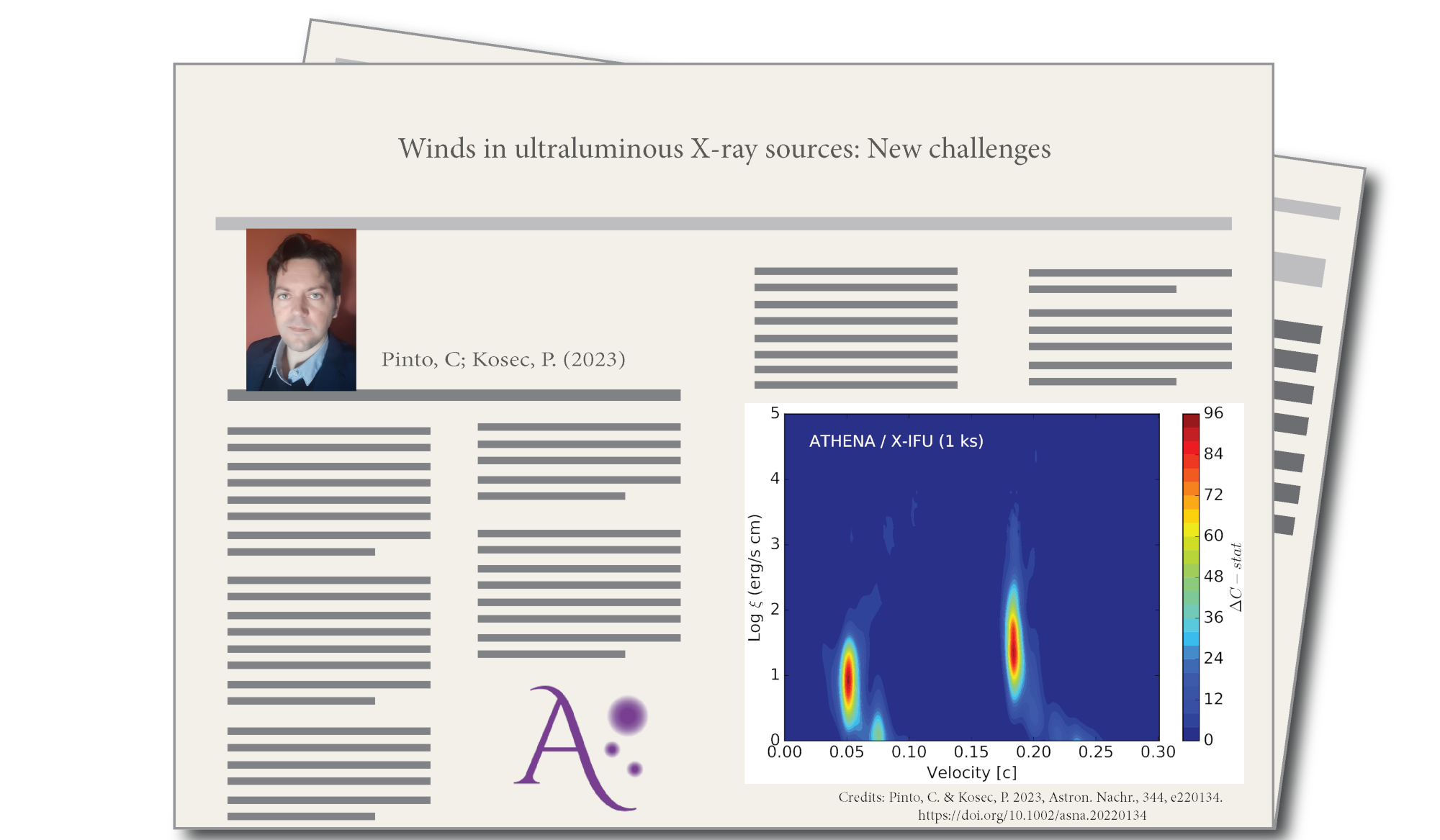
Winds in ultraluminous X-ray sources: new challenges

Inset figure caption: NGC 1313 ULX-1 simulations with Athena/X-IFU: contour plot of spectral fits in loop throughout grids of models in a 2D parameter space. The velocity is constrained by the Doppler shift common to the absorption lines and the photoionisation parameter (an indicator of the wind temperature) is measured through the relative line ratios. Both cool and hot wind phases will be detected with snapshots of one kilo-seconds.
By Ciro Pinto
Ultraluminous X-ray sources (ULXs) are the X-ray binaries with the highest luminosities and the most powerful winds. Nowadays, we know that these are most likely produced by accretion onto neutron stars and black holes beyond the theoretical Eddington limit. The winds are found through emission and absorption lines in the 0.3-10 keV band. Owing to their relativistic speeds (10-30% of the light speed), the outflow rates are high enough to slow down the growth of the compact object and to influence the circumstellar medium. The winds kinetic power indeed seems to match the power required to inflate and heat the 100-parsec interstellar bubbles found around many ULXs. This may have important implications on the birth of primordial supermassive black holes and their connection to the local star formation rate. There are however significant uncertainties in the outflow rate and the structure of the winds due the limited sensitivity of the current facilities. In particular, the variability of the properties of the winds within the timescales of the source continuum variations is out of reach.
The X-ray Integral Field Unit (X-IFU) aboard Athena will revolutionise the study of accretion flows in ULXs. The unique combination of high effective area and spectral resolution will provide an improvement of two orders of magnitude in our line detection with two important consequences: 1) access to variations in the wind within timescales of less than one hour and 2) detection of the hot and fastest wind phases. This will unveil the wind structure at different distances from the compact object and enable measurements of the winds clumpiness, duty cycle and, crucially, outflow rate with high accuracy. In this work, the authors provide an overview on this phenomenology, highlight some recent, exciting results and show how future missions, above all Athena, will improve our understanding.

